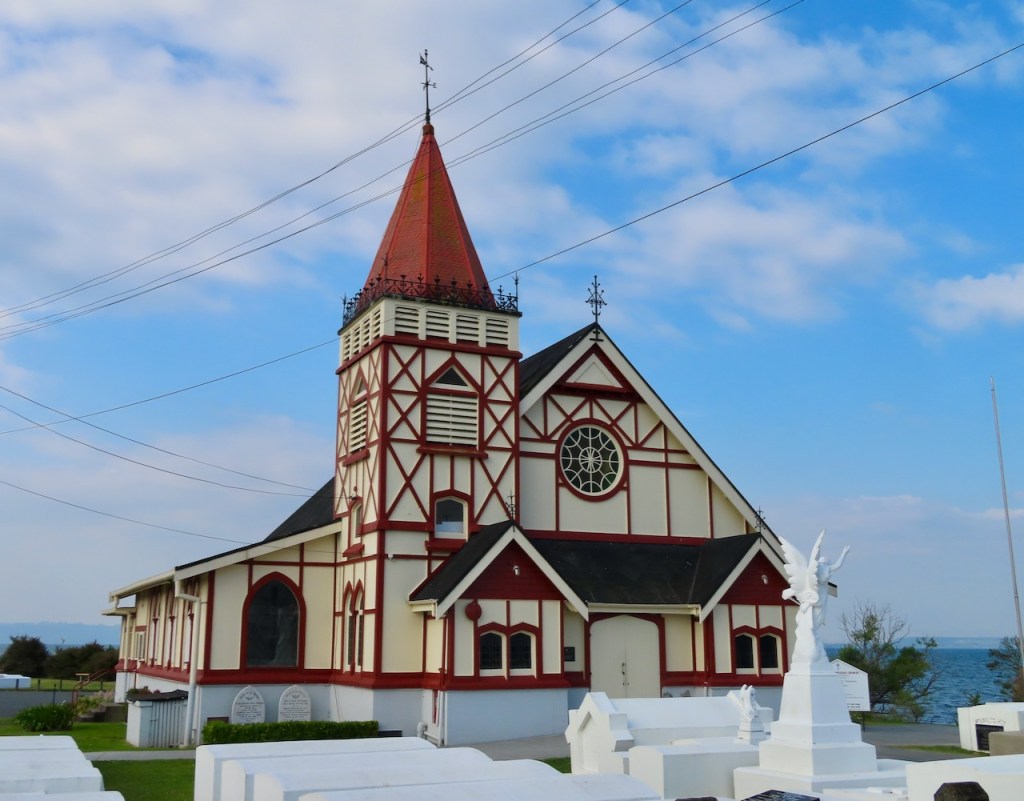When tourists arrive in New Zealand, they often ask, where do the Maori people live, or where can we go see them?
The Maori are indigenous people of New Zealand. They came from Polynesia in the 1300s. Today, they make up 17% of New Zealand’s population. Te Reo is the official language of the country, along with English and New Zealand sign language. Most places in New Zealand have Maori and English names.
The fact is, after hundreds of years of racial integration, there are not many 100% Maori people left. They don’t bear much resemblance to their ancestors in the way they look, carry themselves, or the work they do. Most of them hold high ranking positions in the public and private sectors, as well as own large companies.
Finding an Authentic Experience
However, there are a few spots around New Zealand where you can get a Maori experience, which is often curated for tourism. At Rotarua, a popular tourist town located in the Waikato region of the North Island that reminded me of a tacky strip in Gatlinburg, you can go see a Maori cultural performance with thousands of other travelers.
Or if you want a more intimate set up, book a Powhiri or official Maori Welcome with Aroha Luxury Tours.
Off to Mokai Island

I had a high-speed boat pick me up from my luxurious lakefront lodge, Peppers on the Point. The trip offered a few thrilling rides and water splashes on our way to Mokoia Island.

Mokoia Island was once a Maori tribal residence but is now a historical and nature reserve governed by four local hapu of Ngati Whakaue.
Meeting Our Maori Guide

My guide, Jason (who is one of the tribal members), greeted us at the island and told us the correct way to approach and greet the Maori. The powhiri always takes place on a mare (Maori meeting ground). A warrior from the host community blows on putatara (conch) and challenges the guest to see if they are an enemy or not. As he lays down a branch as a peace offering, the guest must accept the offering. Doing so shows that they come in peace. It is always the male who would make the approach as the women are kept safe until a friendship between the tribe and the guests has been established.
Meeting the People of the Island

After we were seated, older men -who are actual decedents of the island- from the community, gave speeches, and the group sang to support the speaker’s remarks. We were asked to give a speech and sing a song in return (which my husband did on our behalf).

After an expressive performance of melodious songs and rhythmic dance movements, the Maori greeted us with sermonical touching of noses – twice (as we were reminded). It was a custom I have not seen in any other country.
Exploring the Island

Next, following our welcome, John led us on a guided tour and hike through the island. There we saw rare special birds and plants and learned about the Maori love story of Hinemoa and Tutanekai. My favorite was the silver fern buds, called koru – the iconic symbol of New Zealand. They represent new life or the beginning of things.
The Maori concept of manaakitanga means hospitality, generosity and mutual respect. It is also part of New Zealand tourism values. To experience a Maori tradition you will need to travel to New Zealand and find a community that welcomes visitors.

Later that day, I also got a chance to drive past an actual Maori village (not one designed for tourists) in Ohinemutu. While there you can see geothermal hot springs releasing smoke in many front yards. One of the best places to see the traditional architecture was at the Anglican church. The stained glass windows of the church reflected Maori symbols on Jesus’ robe. There’s also a meeting house and a small craft center in the square, where you can buy handicrafts made of wood, bone, flax, paua shell, and greenstone.